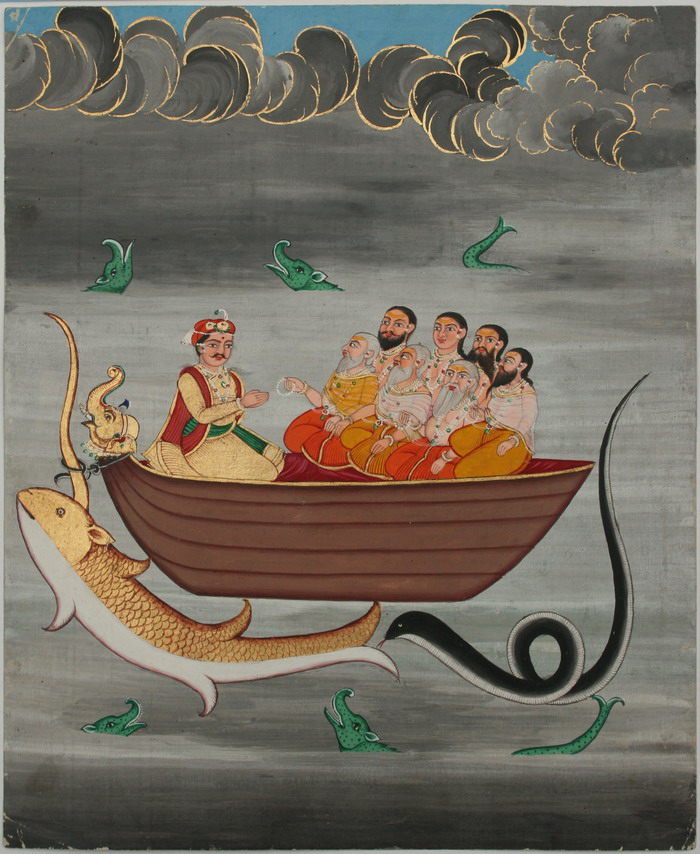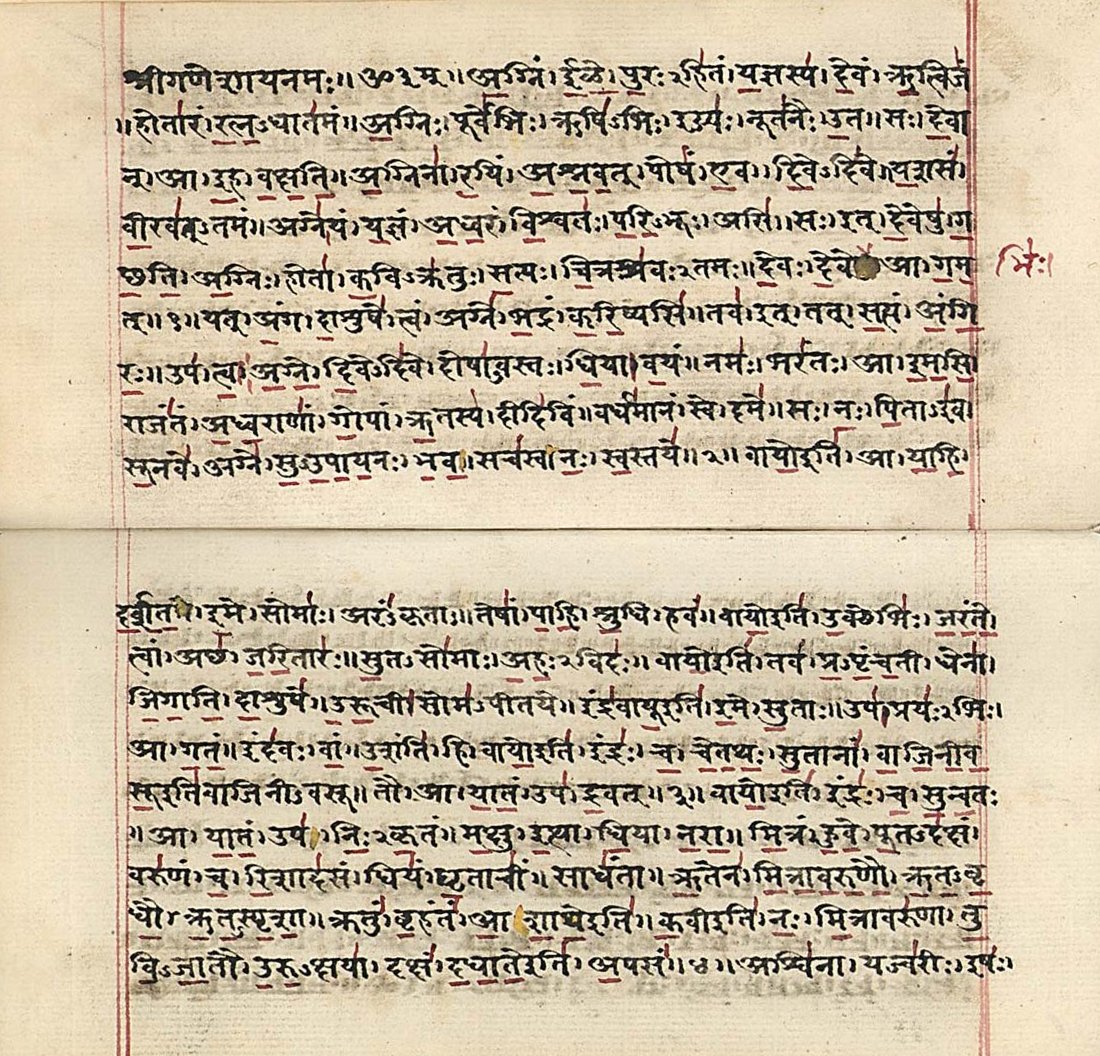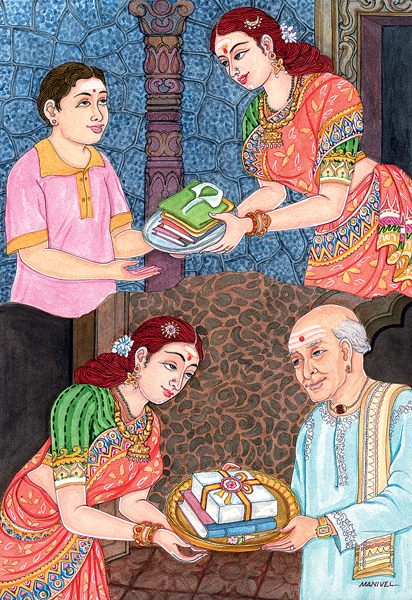|
Mimamsa Sutra
The Mimamsa Sutra (, ) or the Purva Mimamsa Sutras (ca. 300–200 BCE), written by Rishi Jaimini is one of the most important ancient Hindu philosophical texts. It forms the basis of Mimamsa, the earliest of the six orthodox schools ( darshanas) of Indian philosophy. According to tradition, sage Jaimini was one of the disciples of sage Veda Vyasa, the author of the Mahabharata. Overview The work is divided into twelve ''adhyaya''s (chapters), which are further divided into sixty ''padas'' (sections). The text provides rules for the interpretation of the Vedas and also provides philosophical justifications for the observance of Vedic rituals, by offering meaning and significance of Vedic rituals to attain Moksha. Commentaries Over the centuries many commentaries have been written on this text, with the most important being the ''Śabara Bhāṣya'' written by Śābara, which is the only extant commentary on all 12 chapters of the Mimamsa Sutras of Jaimini. The major commentar ... [...More Info...] [...Related Items...] OR: [Wikipedia] [Google] [Baidu] [Amazon] |
Rishi
In Indian religions, a ''rishi'' ( ) is an accomplished and enlightened person. They find mention in various Vedic texts. Rishis are believed to have composed hymns of the Vedas. The Post-Vedic tradition of Hinduism regards the rishis as "great yogis" or "sages" who after intense meditation (Tapas (Sanskrit), tapas) realized the supreme truth and eternal knowledge, which they composed into hymns.Hartmut Scharfe (2002), Handbook of Oriental Studies, BRILL Academic, , pp. 13–15. The term appears in Pali literature as Ishi; in Buddhism they can be either Buddhas, Pratyekabuddha, Paccekabuddhas, Arhat, Arahats or a Buddhist monasticism, monk of high rank. Etymology According to Indian tradition, the word may be derived from two different meanings of the root 'rsh' (). Sanskrit grammarians derive this word from the second meaning: "to go, to move". V. S. Apte gives this particular meaning and derivation, and Monier-Williams also gives the same, with some qualification. Another ... [...More Info...] [...Related Items...] OR: [Wikipedia] [Google] [Baidu] [Amazon] |
Madhvacharya
Madhvacharya (; ; 1199–1278 CE or 1238–1317 CE), also known as Purna Prajna () and Ānanda Tīrtha, was an Indian philosopher, theologian and the chief proponent of the ''Dvaita'' (dualism) school of Vedanta. Madhva called his philosophy ''Dvaita Vedanta, Tattvavāda'' meaning "arguments from a realist viewpoint". Madhvacharya was born at Pajaka near Udupi on the west coast of Karnataka state in 13th-century India. As a teenager, he became a Sannyasa, Sanyasi (monk) joining Brahma-sampradaya guru Achyutapreksha, of the Ekadandi order. Madhva studied the classics of Hindu philosophy, and wrote commentaries on the Principal Upanishads, the ''Bhagavad Gita'' and the Brahma Sutras (''Prasthanatrayi''), and is credited with thirty seven works in Sanskrit. His writing style was of extreme brevity and condensed expression. His greatest work is considered to be the ''Anuvyakhyana'', a philosophical supplement to his bhasya on the Brahma Sutras composed with a poetic structure. In ... [...More Info...] [...Related Items...] OR: [Wikipedia] [Google] [Baidu] [Amazon] |
Ancient Indian Literature
Indian literature refers to the literature produced on the Indian subcontinent until 1947 and in the Republic of India thereafter. The Eighth Schedule to the Constitution of India has 22 officially recognised languages. Sahitya Akademi, India's highest literary body, also has 24 recognised literary languages. The earliest works of Indian literature were orally transmitted. Sanskrit literature begins with the oral literature of the Rig Veda, a collection of literature dating to the period 1500–1200 BCE. The Sanskrit epics ''Ramayana'' and ''Mahabharata'' were subsequently codified and appeared towards the end of the 2nd millennium BCE. Classical Sanskrit literature developed rapidly during the first few centuries of the first millennium BCE, as did the Pāli Canon and Tamil Sangam literature. Ancient Meitei appeared in the 1st century CE with sacred musical compositions like the Ougri,———— and heroic narratives like the Numit Kappa.———— In the medi ... [...More Info...] [...Related Items...] OR: [Wikipedia] [Google] [Baidu] [Amazon] |
Graha
The navagraha are nine heavenly bodies and deities that influence human life on Earth according to Hinduism and Hindu mythology. The term is derived from ''nava'' ( "nine") and ''graha'' ( "planet, seizing, laying hold of, holding"). The nine parts of the navagraha are the Sun, Moon, planets Mercury, Venus, Mars, Jupiter, and Saturn, and the two nodes of the Moon. The term ''planet'' was applied originally only to the five planets known (i.e., visible to the naked eye) and excluded the Earth. The term was later generalized, particularly during the Middle Ages, to include the sun and the moon (sometimes referred to as "lights"), making a total of seven planets. The seven days of the week of the Hindu calendar also corresponds with the seven classical planets and European culture also following same patron and are named accordingly in most languages of the Indian subcontinent. Most Hindu temples around the world have a designated place dedicated to the worship of the navagraha. ... [...More Info...] [...Related Items...] OR: [Wikipedia] [Google] [Baidu] [Amazon] |
Rajasuya
Rajasuya () is a śrauta ritual of the Vedic religion. It is ceremony that marks a consecration of a king. According to the Puranas, it refers to a great sacrifice performed by a Chakravarti – universal monarch, in which the tributary princes may also take part, at the time of his coronation, as a mark of his undisputed sovereignty. Description The rajasuya is associated with the consecration of a king and is prescribed as a ritual to establish a king's sovereignty. It is described in the Taittiriya corpus, including Apastamba '' Śrauta Sutra'' 18.8–25.22. It involves '' soma'' pressing, a chariot drive, the king shooting arrows from his bow, and a symbolic "cattle raid": The newly anointed king seizes cattle belonging to his relative, and then gives part of his property to that relative. Also included is a game of throwing dice with the Adhvaryu priest in which the king wins a cow, by which the king is enthroned and the cosmos is regenerated. There is a revealing of the ta ... [...More Info...] [...Related Items...] OR: [Wikipedia] [Google] [Baidu] [Amazon] |
Vedas
FIle:Atharva-Veda samhita page 471 illustration.png, upright=1.2, The Vedas are ancient Sanskrit texts of Hinduism. Above: A page from the ''Atharvaveda''. The Vedas ( or ; ), sometimes collectively called the Veda, are a large body of religious texts originating in ancient India. Composed in Vedic Sanskrit, the texts constitute the oldest layer of Sanskrit literature and the oldest Hindu texts, scriptures of Hinduism. There are four Vedas: the Rigveda, the Yajurveda, the Samaveda and the Atharvaveda. Each Veda has four subdivisions – the Samhitas (mantras and benedictions), the Brahmanas (commentaries on and explanation of rituals, ceremonies and sacrifices – Yajñas), the Aranyakas (text on rituals, ceremonies, sacrifices and symbolic-sacrifices), and the Upanishads (texts discussing meditation, philosophy and spiritual knowledge).Gavin Flood (1996), ''An Introduction to Hinduism'', Cambridge University Press, , pp. 35–39A Bhattacharya (2006), ''Hindu Dharma: Introduc ... [...More Info...] [...Related Items...] OR: [Wikipedia] [Google] [Baidu] [Amazon] |
Deva (Hinduism)
''Deva'' (, ) means 'shiny', 'exalted', 'heavenly being', 'divine being', 'anything of excellence', and is also one of the Sanskrit terms used to indicate a deity in Hinduism.Monier Monier-Williams, A Sanskrit-English Dictionary” Etymologically and Philologically Arranged to cognate Indo-European Languages, Motilal Banarsidass, page 492 ''Deva'' is a masculine term; the feminine equivalent is ''Devi (Hinduism), Devi''. The word is a cognate with Latin ''deus'' ('god') and Greek Zeus. In the earliest Vedic literature, all supernatural beings are called ''Devas''George Williams (2008), A Handbook of Hindu Mythology, Oxford University Press, , pages 90, 112 and ''Asuras''. The concepts and legends evolved in Indian literature#In archaic Indian languages, ancient Indian literature, and by the late Vedic period, benevolent supernatural beings are referred to as ''Deva-Asuras''. In post-Vedic Hindu texts, such as the Puranas and the Itihasas of Hinduism, the ''Devas'' represent the g ... [...More Info...] [...Related Items...] OR: [Wikipedia] [Google] [Baidu] [Amazon] |
Karma
Karma (, from , ; ) is an ancient Indian concept that refers to an action, work, or deed, and its effect or consequences. In Indian religions, the term more specifically refers to a principle of cause and effect, often descriptively called the principle of karma, wherein individuals' intent and actions (cause) influence their future (effect): Good intent and good deeds contribute to good karma and happier Reincarnation, rebirths, while bad intent and bad deeds contribute to bad karma and worse rebirths. In some scriptures, however, there is no link between rebirth and karma. In Hinduism, karma is traditionally classified into four types: Sanchita karma (accumulated karma from past actions across lifetimes), Prārabdha karma (a portion of Sanchita karma that is currently bearing fruit and determines the circumstances of the present life), Āgāmi karma (future karma generated by present actions), and Kriyamāṇa karma (immediate karma created by current actions, which may y ... [...More Info...] [...Related Items...] OR: [Wikipedia] [Google] [Baidu] [Amazon] |
Vedanta
''Vedanta'' (; , ), also known as ''Uttara Mīmāṃsā'', is one of the six orthodox (Āstika and nāstika, ''āstika'') traditions of Hindu philosophy and textual exegesis. The word ''Vedanta'' means 'conclusion of the Vedas', and encompasses the ideas that emerged from, or aligned and reinterpreted, the speculations and enumerations contained in the Upanishads, focusing, with varying emphasis, on devotion, knowledge and liberation. Vedanta developed into many traditions, all of which give their specific interpretations of a common group of texts called the ''Prasthanatrayi, Prasthānatrayī'', translated as 'the three sources': the ''Upanishads'', the ''Brahma Sutras'', and the ''Bhagavad Gita''. All Vedanta traditions are exegetical in nature, but also contain extensive discussions on ontology, soteriology, and epistemology, even as there is much disagreement among the various traditions. Independently considered, they may seem completely disparate due to the pronounced ... [...More Info...] [...Related Items...] OR: [Wikipedia] [Google] [Baidu] [Amazon] |
Vallabha
Vallabha, also known as Vallabhācārya or Vallabha Dīkṣita (May 7, 1478 – July 7, 1530 CE), was the founder of the Krishna, Kr̥ṣṇa-centered Pushtimarg, Puṣṭimārga sect of Vaishnavism, and propounded the philosophy of Shuddhadvaita, Śuddhādvaita. His biography is depicted in several sectarian Puṣṭimārga hagiographies. Born into a Telugu Brahmin family, Vallabha studied Hindu philosophy from early age, then traveled throughout the Indian subcontinent, particularly the Braj (Vraja) region, for over 20 years. He became one of the important leaders of the devotional Bhakti movement. He won many philosophical scholarly debates against the followers of Advaita Vedanta, Advaita Vedānta. He began the institutional worship of Shrinathji, Śrī Nāthajī on Govardhana Hill. He acquired many followers in the Indo-Gangetic Plain, Gangetic plain and Gujarat. After his death, the leadership of his sampradāya passed to his elder son Gopīnātha. Vallabha's philosophy pr ... [...More Info...] [...Related Items...] OR: [Wikipedia] [Google] [Baidu] [Amazon] |







